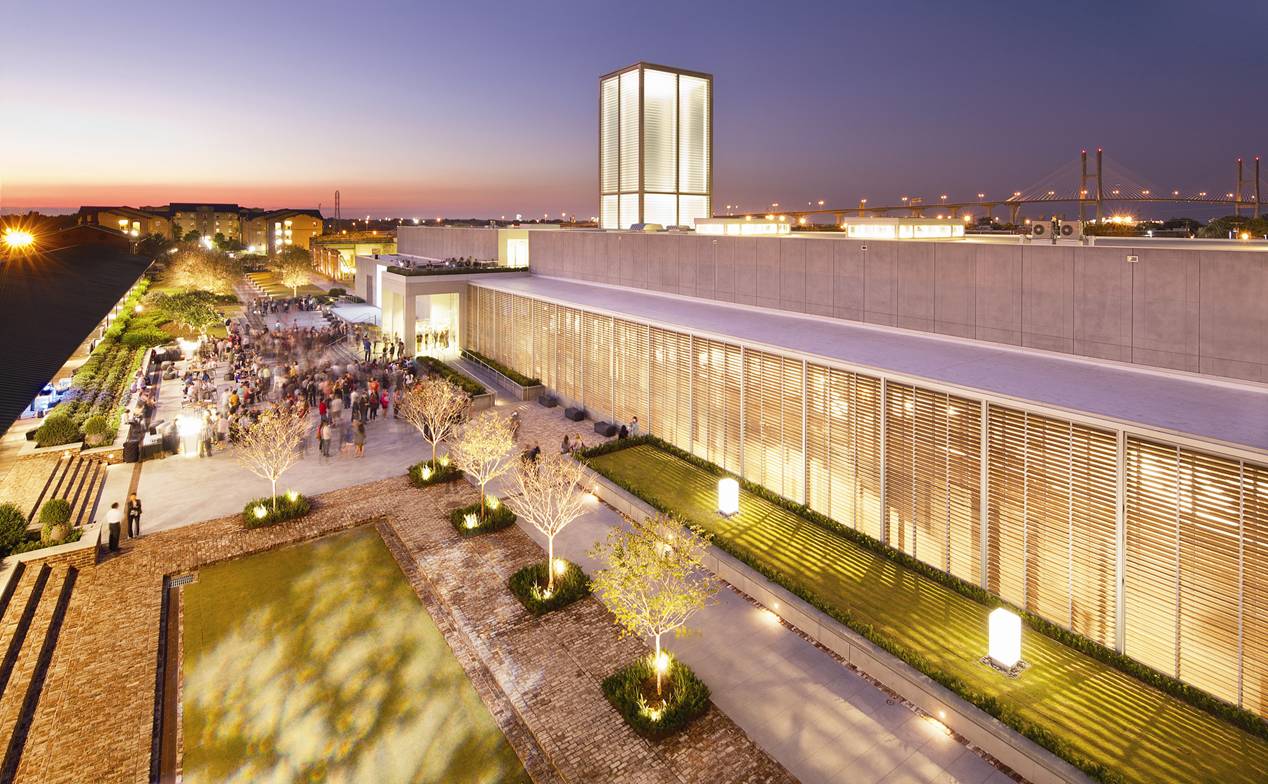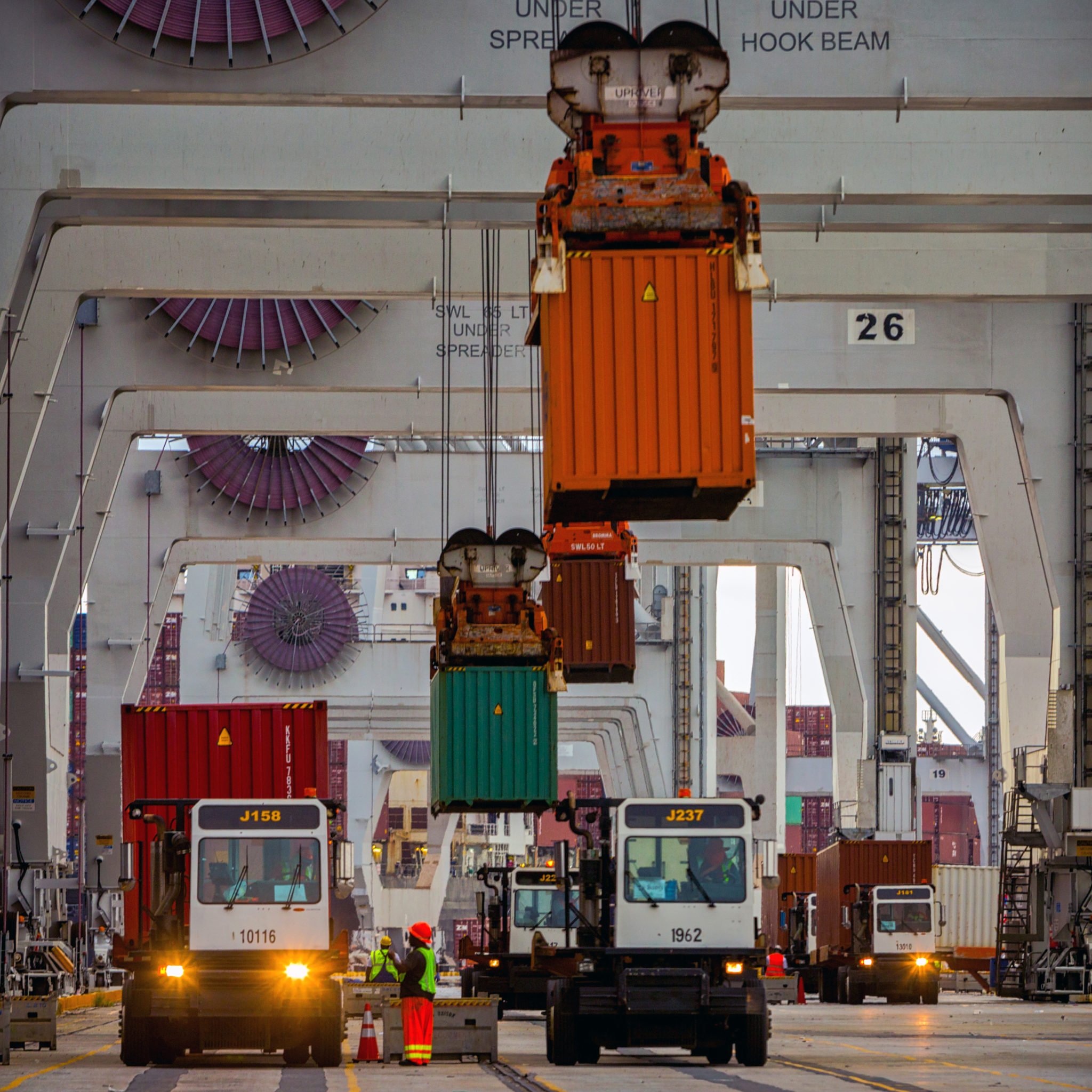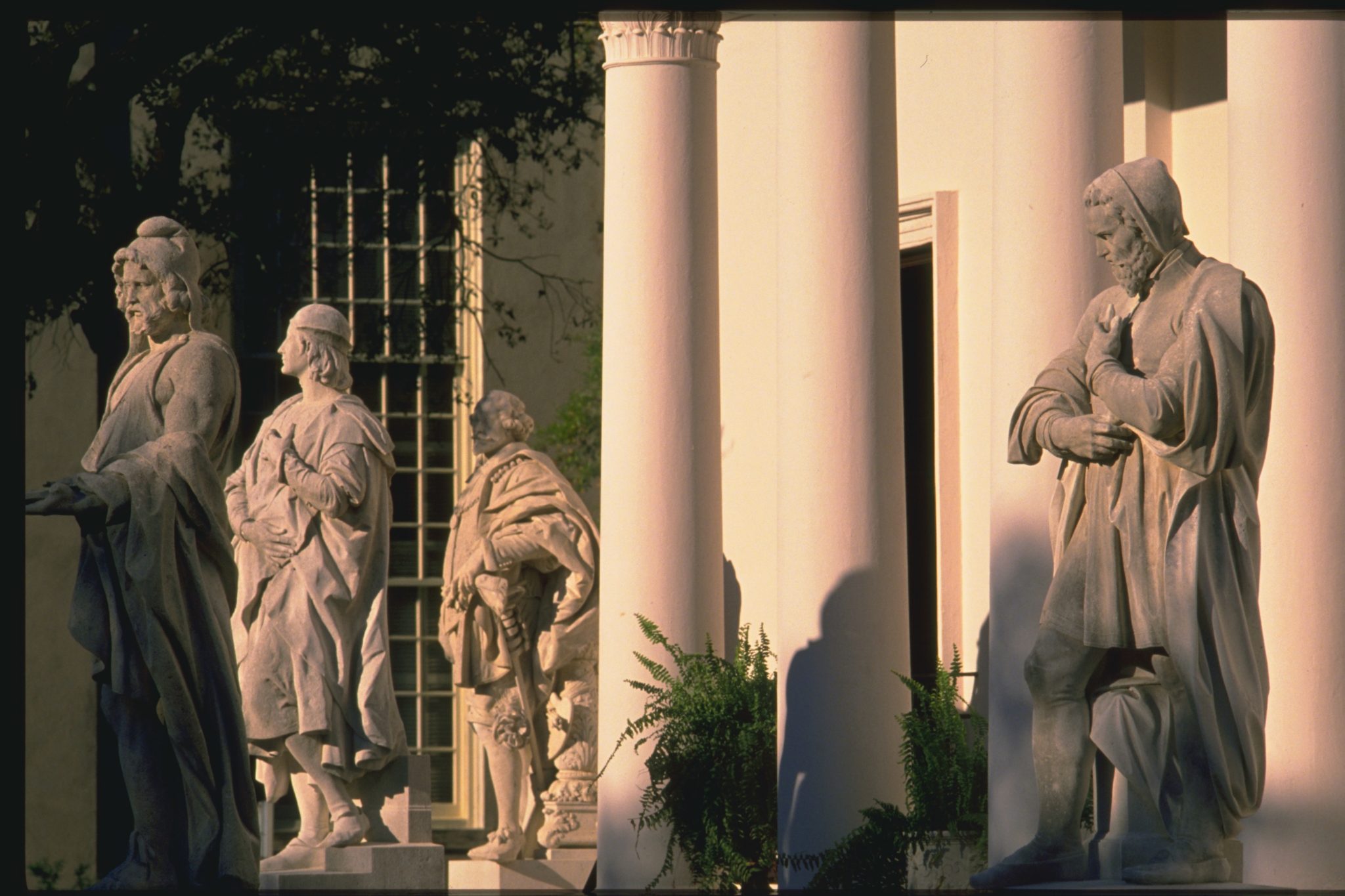Wisdom dictates to never underestimate a pretty face, and it would surely be an oversight to think Savannah’s virtue lies merely in its abundant charms. The commercial accomplishments of Savannah and its surrounding regions are formidable: The port of Savannah is the country’s fastest-growing, aerospace engineering has put down roots there, and the area is a favorite locale for some of Hollywood’s biggest blockbusters (one reason for the latter: the steady supply of creative energy found in the students, alumni and faculty at the Savannah College of Art and Design). Inevitably, businesses and investors worldwide are taking note of the economic opportunity in this increasingly global Southern city.

“It’s always cool to walk into a room with a bunch of business folks anywhere in the world, whether it’s Shanghai or Munich or Tokyo, and hear them bring up one of four things: the port, Gulfstream, SCAD or visiting downtown Savannah,” says Hugh “Trip” Tollison, president and CEO of the Savannah Economic Development Authority. “There are hardly any other communities—especially of our size—that can offer that many things to talk about.”
With these success stories generating buzz in the international business community, it’s SEDA’s job to turn interest in Savannah into investment.
Touting powerful incentives, a robust infrastructure, prime locations and an affordable cost of living, SEDA presents the greater Savannah area as a highly attractive haven for corporations and entrepreneurs. Workforce development programs proliferate in every industry, and more than 66,000 students are enrolled in higher education institutions, prepared to join the workforce.
“In Savannah, you’ve got the business case, you’ve got the people, you’ve got the quality of life. The regulatory environment is fair, and you’ve got a willing spirit to develop the city—in a smart way, of course,” extols Tollison. “People want to invest in everyone else’s success.”

The touchstone of the region’s economy is the Port of Savannah. Situated at the intersection of two interstate highways and a highly efficient railroad network, Savannah is particularly suited for import/export, which explains the phenomenal growth of its port. Overseen by the Georgia Ports Authority (GPA), the port is the largest single-terminal container facility in North America, comprising two deep-water ports and barge operations on the Savannah River. GPA employs more than 400,000 people, generates $44 billion in annual revenue (representing 8 percent of the state’s total GDP) and, due to the increased capacity of post-Panamax ships, is setting annual records for tonnage volume.
“As the third-busiest gateway for containerized trade in the U.S., the Port of Savannah is a vital link to the global marketplace for the state and nation,” says Georgia Ports Authority Executive Director Griff Lynch. “As vessel sizes have increased, our total volumes and market share have as well. By expanding our container yard space, growing our crane fleet and doubling our on-terminal rail capacity, the Georgia Ports Authority is preparing to double our annual container volumes, which will continue to drive growth for decades to come.”
With so many goods passing through the port, demand for storage space is high. In 2004, there was around 1 million square feet of industrial storage space along the river; in the second quarter of 2019, dedicated warehouse space for companies such as Target and IKEA amounted to over 70 million square feet. While those facilities generate revenue, they also take up a tremendous amount of real estate, leading to a need to diversify land use in the region’s industrial zone.
“We realized if we didn’t build something for advanced manufacturing and invest in bringing in those companies now, we were not going to have any land left,” says Tollison. “We as an authority figured out that we had to do something outside of warehouse distribution.”
SEDA’s answer is the Savannah Manufacturing Center, a 719-acre, easily accessible development tract reserved for companies to set up processing plants and advanced tech operations. The $30 million project offers county and city tax exemptions and is expected to be fully operational by the end of the year.
As an established polestar for shipping, transportation and advanced manufacturing, Savannah also has a logistics management sector. Shepherding the supply chain from shipping to storage and distribution and back again requires keen organization and advanced technologies. Robotics, artificial intelligence, data science and software all figure into the complex processes.
The increasing need for such applied technology is the impetus behind the creation of the Savannah Logistics Technology Corridor, a regional focus area encompassing multiple municipalities that will encourage growth through education, incubation and economic incentives. Following the example of neighboring Augusta, which has become an international hub for cybersecurity through investment and innovation, Savannah and its surrounding tech corridor are poised to lead logistics technology worldwide.

“Logistics is where Savannah can truly lead an innovation economy. We have the location, we have the infrastructure to attract e-commerce, and now we’re going to have an environment where companies can innovate and find the workforce to implement that innovation,” says Jennifer Bonnett, SEDA’s vice president of innovation and entrepreneurship.
Planned components include academic programming from kindergarten to the PhD level as well as incentives to activate innovation, such as student loan repayment and legislation for high-level angel tax credits. The state recently approved $400,000 for a base study to determine a central location for the project, matched by a $100,000 grant from SEDA and the City of Savannah. Bonnett has been working with a task force on garnering the necessary buy-ins and recently helped establish the Bridge Fund, a seed incubator to support innovative entrepreneurs.
“We’re on the map for history and tourism, and now we’re going to be on the map for innovation as well,” says Bonnett, who estimates 5,000 jobs will spring from the corridor over the next 5 to 10 years. “We’re very optimistic.”

Innovation and economic development are finding new pathways, but the region also boasts established mainstays such as Gulfstream Aerospace. The leading manufacturer of corporate aircraft has called Savannah home for more than 50 years, drawing the brightest engineering talent to the community and supporting ancillary businesses as it continues to dominate the global marketplace.
“Gulfstream relocated to Savannah in 1967 for the quality of the workforce, the positive relationships between businesses and local and state leaders, and a promising infrastructure, including the airport,” says Gulfstream President Mark Burns. “Over the decades, the business environment and infrastructure have only gotten better.”
All this talk about infrastructure investment and economic incentives might not sound particularly glamorous, but its helped make Savannah attractive to one industry that is glamorous: Hollywood. Recent hits such as Gemini Man, starring Will Smith, SXSW darling The Peanut Butter Falcon, and Hulu true crime original The Act were all filmed in Savannah, and the film industry brought in $120.1 million last year alone. Plus, Savannah’s ubiquitous presence in films and television shows helps market the community to a global audience.

Unique locations, the presence of strong local talent and a professional production community, including SCAD alumni and faculty, have surely contributed to the showbiz surge. But the most important reason for all the spotlights in the streets is that Savannah has stepped up to attract filmmaking, supplementing Georgia’s already generous 30 percent tax credits, which have no caps or sunset clause, with its own Savannah Entertainment Incentives.
Through the Savannah Regional Film Commission, SEDA offers extra cash rebates for qualified productions and relocation reimbursements for professional crew, many of whom move from Atlanta, New York and Los Angeles. In 2015, SEDA hired veteran filmmaker Ralph Singleton to spread the word in L.A., and Singleton has been effective: More than 200 productions were filmed in Savannah in 2018, with an economic impact of over $250 million.
“Now we’re working to take it to the next level and do what Atlanta did—build soundstages and create permanent infrastructure so you can do the whole film here,” shares Tollison.
As additional economic bright points, Tollison cites Savannah’s hospitality industry, its regional healthcare facilities and the World Trade Center Savannah, a “global chamber of commerce” and international network that promotes trade partnerships and provides support for overseas companies doing business in the U.S. It also promotes homegrown businesses and prepares them to launch onto the world stage, notably the Savannah Bee Co., which now has a presence in more than 2,000 retail outlets domestically and abroad.
“This is an excellent time to be investing in Savannah’s growth. We’re building infrastructure that’s putting us way out ahead and we’re attracting incredible talent,” says Tollison.
“People are realizing that they can have world-class facilities and a fabulous quality of life. We’ve really got it all.”
